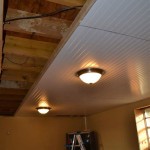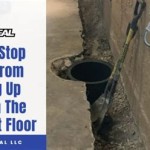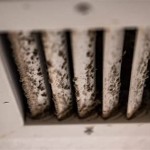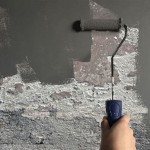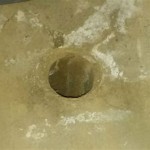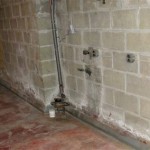How To Fix Water Seeping Through Basement Walls
Water seepage through basement walls is a pervasive problem affecting many homeowners. It can lead to a host of issues, including structural damage, mold growth, and decreased indoor air quality. Addressing this issue promptly and effectively is crucial for maintaining the integrity of the home and the health of its inhabitants. Understanding the causes of water seepage and the available remediation strategies is essential for achieving a long-term solution.
The presence of water in a basement can manifest in various forms. Obvious signs include standing water on the floor, visible dampness on the walls, and the presence of water stains. However, more subtle indicators may include a musty odor, efflorescence (a white, powdery deposit on walls), and peeling paint. Regular inspections of the basement, particularly after periods of heavy rainfall or snowmelt, can help identify potential problems early on before they escalate.
Water seepage through basement walls is typically caused by a combination of factors related to hydrostatic pressure, soil conditions, and the integrity of the foundation. Hydrostatic pressure refers to the force exerted by water against the foundation walls. When the soil surrounding the foundation becomes saturated, the water pressure increases, forcing water through cracks, pores, and other vulnerabilities in the concrete or block walls. Improper grading, clogged gutters, and inadequate drainage systems can exacerbate this problem by increasing the amount of water that accumulates around the foundation.
The type of soil surrounding the foundation also plays a significant role in water seepage. Clay soils, for example, have poor drainage properties and tend to retain water, increasing hydrostatic pressure. Sandy soils, on the other hand, drain more readily. The composition and compaction of the soil can influence the rate at which water infiltrates the foundation and the likelihood of seepage.
The age and condition of the foundation itself are also critical factors. Over time, concrete and block walls can develop cracks due to settling, frost heave, and other environmental stressors. These cracks provide pathways for water to enter the basement. In addition, the original waterproofing measures, such as exterior coatings or drainage systems, may degrade over time, leaving the foundation vulnerable to water intrusion.
Identifying the Source of the Seepage
Before implementing any remediation measures, it is essential to accurately identify the source of the water seepage. This involves a thorough inspection of the basement walls, paying close attention to areas where water is visible or suspected. Look for cracks, holes, and other defects in the foundation. Check the condition of the floor-wall joint, as this is a common entry point for water.
Examine the exterior of the foundation walls for potential sources of water intrusion. Inspect the grading around the house to ensure that the ground slopes away from the foundation. Clean out gutters and downspouts to ensure that they are functioning properly. Check for any signs of leaks or damage to underground pipes or irrigation systems. A significant increase in water bills may indicate a hidden leak.
In some cases, it may be necessary to excavate around the foundation to fully assess the condition of the exterior walls. This will allow for a thorough inspection of the waterproofing membrane and drainage system. A professional contractor can assist in this process and provide expert guidance on identifying the source of the seepage.
Interior Waterproofing Solutions
Interior waterproofing solutions address water seepage from the inside of the basement. These methods are typically less invasive and less expensive than exterior waterproofing, but they may not be as effective in addressing the root cause of the problem. Interior solutions are typically employed when exterior access is limited or when the seepage is relatively minor.
One common interior waterproofing method involves the application of a waterproof coating to the basement walls. These coatings are designed to create a barrier that prevents water from penetrating the concrete or block. Before applying the coating, it is essential to clean the walls thoroughly and repair any cracks or holes. Several types of waterproof coatings are available, including cement-based coatings, epoxy coatings, and silicate-based sealers. The choice of coating will depend on the severity of the seepage and the type of wall material.
Another interior waterproofing solution involves the installation of an interior drainage system. This system typically consists of a perforated pipe installed along the perimeter of the basement floor, which collects water that seeps through the walls. The water is then directed to a sump pump, which pumps it away from the foundation. Interior drainage systems are effective in managing water that enters the basement, but they do not prevent water from seeping through the walls in the first place.
A third option for interior waterproofing is the installation of vapor barriers or plastic sheeting. These barriers are attached to the basement walls and prevent water vapor from entering the living space. Vapor barriers can help reduce humidity levels and prevent mold growth, but they are not effective in stopping liquid water from seeping through the walls.
Exterior Waterproofing Solutions
Exterior waterproofing solutions address water seepage from the outside of the basement, tackling the root cause of the problem. These methods typically involve excavating around the foundation and applying a waterproof membrane to the exterior walls. Exterior waterproofing is more invasive and expensive than interior waterproofing, but it provides a more comprehensive and long-lasting solution.
The most common exterior waterproofing method involves the application of a waterproof membrane to the foundation walls. This membrane can be made of various materials, including asphalt-based coatings, rubberized asphalt, or flexible polymer materials. The membrane is applied to the exterior of the walls after the foundation has been cleaned and prepared. It creates a continuous barrier that prevents water from penetrating the concrete or block. A protective board is often installed over the membrane to prevent damage during backfilling.
Another important aspect of exterior waterproofing is the installation of a drainage system. This system typically consists of a perforated pipe installed along the footing of the foundation, which collects water from the surrounding soil. The water is then directed to a sump pump or a gravity drain system, which carries it away from the foundation. The drainage system helps to reduce hydrostatic pressure and prevent water from accumulating around the foundation walls. It is crucial to ensure that the drainage system is properly sloped and free of obstructions to ensure that it functions effectively.
In addition to the waterproof membrane and drainage system, proper grading is essential for effective exterior waterproofing. The ground around the house should slope away from the foundation to prevent water from pooling near the walls. Topsoil should be compacted and graded to ensure proper drainage. Downspouts should be extended away from the foundation to prevent water from accumulating near the base of the house. The use of clay soil near foundations should be avoided because of its poor drainage characteristics.
Furthermore, the repair of cracks in the foundation walls is a critical component of exterior waterproofing. Cracks can be repaired using various methods, including epoxy injections, hydraulic cement patches, or polyurethane sealants. The choice of repair method will depend on the size and location of the crack. It is essential to ensure that the repair is watertight and durable to prevent future water seepage.
It is also important to ensure that the gutters and downspouts are in good working order. Clean gutters and downspouts regularly and inspect them for leaks or damage. Ensure that downspouts are properly connected to the drainage system and that they discharge water away from the foundation. The installation of gutter guards can help prevent debris from clogging the gutters.

Wet Basement Diy Repair Guide Radonseal

Repairing Leaking Basement Walls What Works And Doesn T Work For Wall Leak Repairs

The Best Methods For Basement Leak Repair Acculevel

7 Ways To Stop Rain Leaking Into Your Basement Baker S Waterproofing

Repairing Leaking Basement Walls What Works And Doesn T Work For Wall Leak Repairs

Wet Leaking Basement Waterproofing Solutions Albany Schenectady Ny

How To Fix Water Leaking Into Basement After Heavy Rain Gj Macrae

How To Fix And Prevent A Leaking Basement Projex

Why Your Basement Leaks In Heavy Rain

Water Ingress Solutions Waterstop Iection To Concrete Structures
